'Nude' food, plastic recycling, gladwrapped cucumber and public education... Kim Hill is joined by four experts to discuss the tension between keeping food safe and filling the environment with waste.
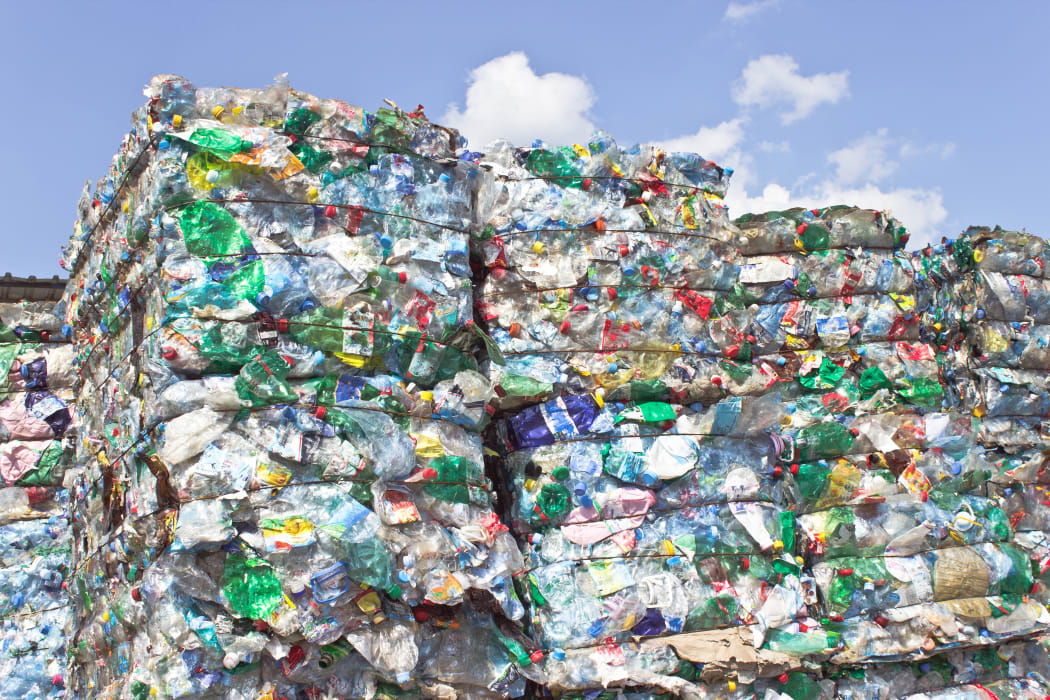
Photo: 123RF
The experts: Sharon Humphreys of the NZ Packaging Council, Mike Sammons from Foodstuffs, the Prime Minister's Chief Science Advisor Prof. Juliet Gerrard, and Assoc. Prof. Xiaomeng Wu, an expert in food packaging and safety from the China Agricultural University, Beijing.
Highlights from the discussion:
Is recycling the answer?
Kim Hill:
Dr Wu, do you think we can recycle our way out of the situation?
Xiaomeng Wu:
I certainly don’t believe that. First, if you look at our plastic production each year, we are making more and more plastics. So eventually there will be more and more plastic waste in the environment. Simple maths, right? And the other thing is recycling rates across the globe are low. Only 9% of plastic is recycled now. The material we recycle the most is PET, at about 14%. That's the one we did the best.
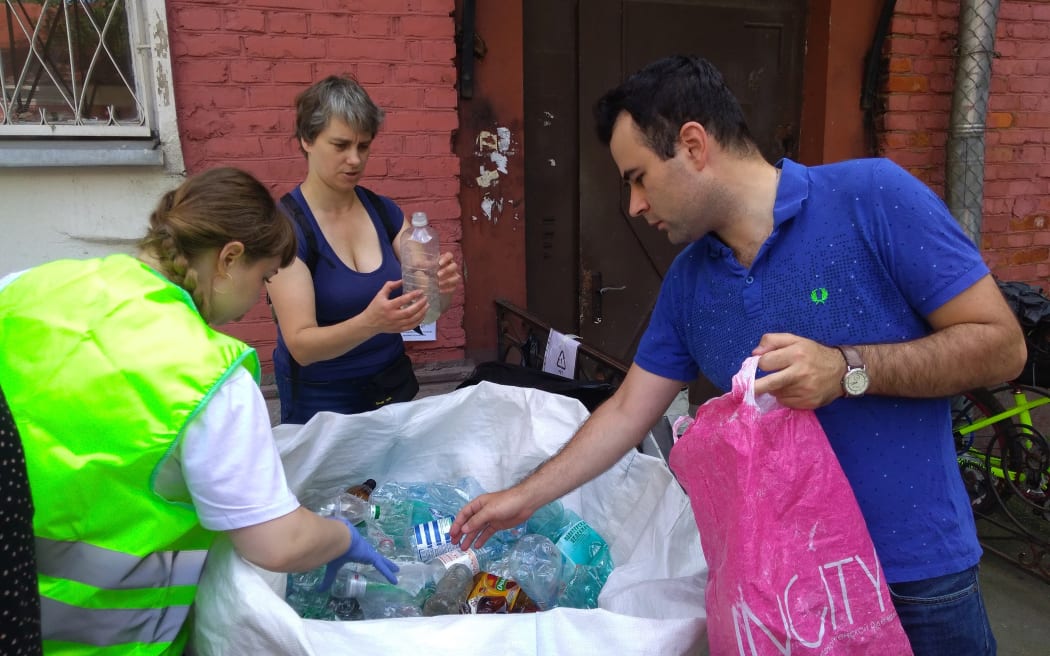
PET bottle recycling in Russia Photo: Wikimedia Commons / WC Kotofey2016
Kim Hill:
Why aren't we recycling more PET if it's the easiest to do?
Xiaomeng Wu:
You hardly ever find packaging will be from one single material. Instead, it's usually nine layers. Each layer has a different function to keep your food more fresh, or make the shelf-life longer, but as a result, it's really hard to separate them in the recycling facility. So they just stopped doing that.
Kim Hill:
All right. So that's another important problem. What do you think, Juliet? Can we even approximate dealing with the problem by recycling?
Juliet Gerrard:
No. Even if you could do all the sorting and get people to recycle, the chemistry is still not perfect, so it will never be [an enclosed circle of use and recycling], it will be a downward spiral.
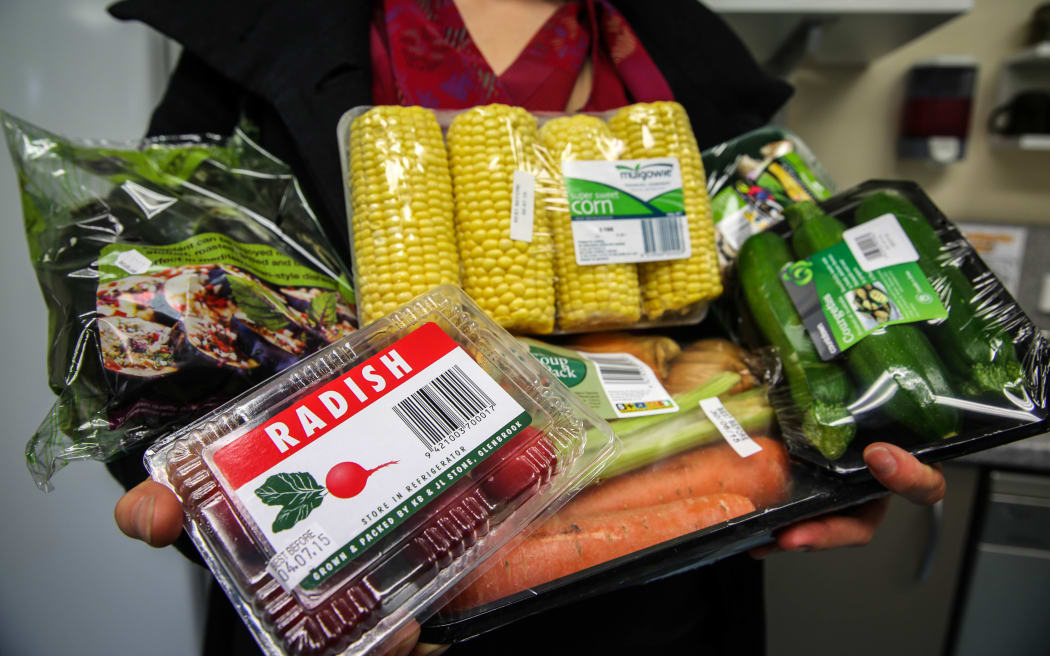
Photo: RNZ / Alexander Robertson
'Nude food'
Mike Sammons:
The first thing you have got to do is reduce. You have got to say, “Do I need this piece of packaging? What purpose is it serving?” If it all it’s serving to do is actually just to sell that product and doesn't have any true benefit to it, you've got a question whether it's worthwhile.
A number of supermarkets within Christchurch are doing a promotion called food in the nude. You don't have any packaging within your produce department at all, and that is selling more food than the produce department with covered-in-plastic packaging.
Kim Hill:
Juliet, Dr Wu has made the point that plastic's very complicated. It's very mixed up and that makes the recycling of it very difficult. Can we make plastic simpler so that we could recycle it?
Juliet Gerrard:
That's the goal. Some countries deal with it very well, culturally, like Japan which sorts into 11 different types of plastic.
Kim Hill:
But one bag could contain maybe six or seven different sorts of plastic. You can't sort that out.
Juliet Gerrard:
The fewer materials we use, the better. So if we could get down to maybe three classes for most materials, that will be a big step forward.
Kim Hill:
And can we do that?
Xiaomeng Wu:
It's going to be problematic. You can reduce some of the materials we add in like antioxidants or oxygen barriers. But if you reduce those materials, you are going to increase the gauge of the ones you use, resulting in an increase of plastic packaging.
Kim Hill:
Well, yes. But if it's all the same sort of plastic, then we'll be able to recycle it, right?
Xiaomeng Wu:
In principle, yes. But it's still going to be hard.
Kim Hill:
Also, if you reduce the type of layers, maybe, would you suggest that we are threatening food safety by doing that?
Sharon Humphreys:
Well, there's no question that those layers – whether it's a gas barrier layer or an oxygen-scavenging layer – are there for a purpose. So if we eliminate that, it might be that then it seriously compromises the shelf life of the product. If that is a product that's not a fast-moving good, then that could then seriously contribute to food waste. So actually, it probably isn't worth doing.

Recycling bins in Yamanaka Onsen, Japan Photo: Flickr / Rosewoman
Kim Hill:
If you're going to make it consistent across the country, what are you going to make consistent? What level of recycling? Are you going to go down the Japan path, where you have 11 different buckets?
Mike Sammons:
Segregation has got to be part of the solution because at the moment, we're collecting what we refer to as co-mingled packaging. And all it does is create a further problem when you then have to try and separate it out. So if you go to one of these recycling facilities, where they just where they accept a lot of the co-mingled, you've either got to spend a vast quantity of money on very, very complicated technical equipment to try and sort it out technically, or you've got to employ manual people to pick it apart.
Kim Hill:
Is it not acceptable to employ people to do it?
Mike Sammons:
Instead of saying this is going to be a problem, why not pick it up separated at the curbside? If you look to Europe, for instance, to Scandinavia or Germany, you'll have three or five different separated waste streams and then they're clean commodities. They're not going to get all mixed up because a lot of the commodities coming out the materials recycling plants at the moment, are filthy and they're contaminated.
Kim Hill:
Which is one reason why China isn't taking so much anymore?
Xiaomeng Wu:
China still can import some, but not every single piece of waste.
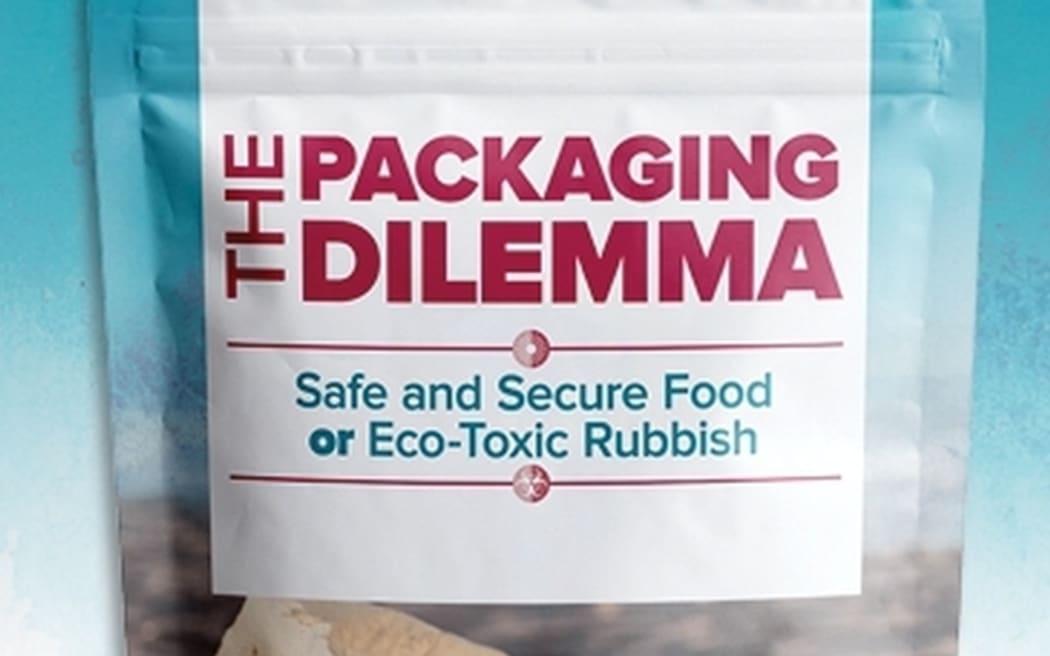
Photo: NZ Food Safety Science & Research Centre
The tipping point
Kim Hill:
Sharon Humphreys, do you think we're at some kind of tipping point, where what people previously chose their products for has now changed?
Sharon Humphreys:
I think that there is a tipping point that's been reached in terms of awareness. But does that always translate into buying behaviour? I'm not so sure that the two go hand in hand. Are people prepared to pay a premium for it? I don't know – it doesn’t necessarily translate into buying behaviour. How do we make it so that it is affordable?
Kim Hill:
Mike Sammons: If product suppliers do not ensure, as the New Zealand Plastic Packaging Declaration requires, that their packaging is recyclable, reusable or compostable by 2025, will Foodstuffs refuse to stock those products?
Mike Sammons:
Different companies have signed up. So Foodstuffs have a certain amount of control in terms of what they do.
Kim Hill:
What do you mean a certain amount of control? Foodstuffs says, “We'll take this product, but we won't take that one.” Presumably, that's what you say every day, isn't it?
Mike Sammons:
We're customer-driven. We're there to serve customer demand and if customers still want to buy a product, it's not for Foodstuffs to say “I'm sorry, but we know better. You're not buying it anymore.” But what we are doing –
Kim Hill:
Excuse me for a moment. If the plastic packaging declaration requires that the packaging is recyclable, reusable, or compostable by 2025, your small print says “only if the consumer wants that”?
Mike Sammons:
No. What we're saying is where we have control over it, where it's our own branded product like Pam's and Value, or the packaging we use, such as meat trays, we'll make sure we're going to hit that target. But where it's the likes of Fonterra brands, or Heinz Watties, their relationship in signing that declaration is with the Ministry for the Environment. I don't think it's beholden upon Foodstuffs to actually hold them to it.
Kim Hill:
How much pressure is there in China for this kind of thing? Are you banning plastic bags?
Xiaomeng Wu:
Not at state level, but there is a province called Hainan, an island in the South China Sea, which released a ban of single-use plastic, and there's another province there on the mainland also.
Kim Hill:
What is that like? 0.01% of the Chinese population?
Xiaomeng Wu:
Well, it's not a lot. It's definitely not a heavily-populated area. Our main focus here right now is towards recycling and garbage classification. That's the Chinese goal. They have volunteers at the garbage disposal site to oversee your behaviour.
Kim Hill:
Really?
Xiaomeng Wu:
Yes. So you have to dispose of your garbage, according to their categories.
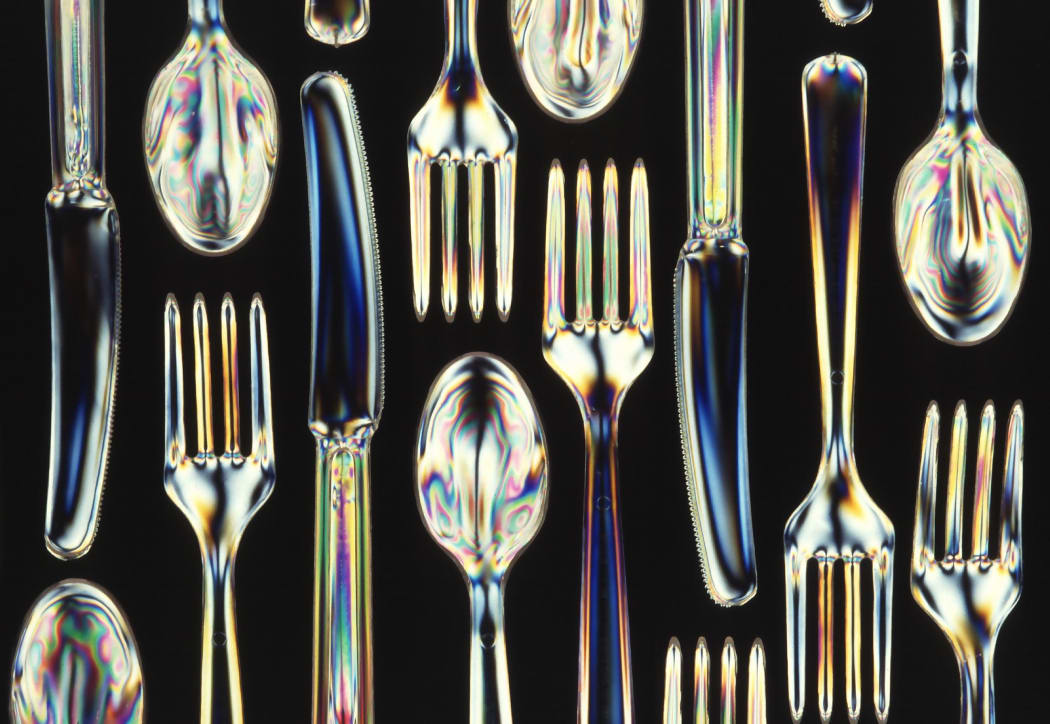
Disposable cutlery made from biodegradable plastic Photo: Wikimedia Commons / Scott Bauer
The role of biodegradable packaging
Kim Hill:
People are confused, right? I think you told a story a little earlier in the green room, Mike Sammons: about how hard it was for you to degrade a bag.
Mike Sammons:
We'd been approached by a supplier who said, you know, we've got this great bag that will compost down within no time at all. And we just went through a few basic exercises of slowly cooking it, putting boiling water on it every day, agitating, it putting it on the window sill. And six weeks later, when they came in, we filled it up with water and it didn't have a single leak in it. So we surprised them.
And I think that tells us that we should look to certification. If somebody says it's compostable, it has to have been tested to that standard to give you confidence that if you're going to put it into your home compost, it's going to be gone within a year.
Plastic packaging is really good at its job
Kim Hill:
And Sharon Humphreys, you said that the biggest challenge is to design systems which prevent product waste, don't compromise health and hygiene, and don't put cost pressures on the most vulnerable in our society. That's a lot, isn't it?
Sharon Humphreys:
The whole reason why we have such a proliferation of plastic packaging is because it's cheap, and it's really, really good at its job.
Kim Hill:
It depends, surely, on how you measure the costs?
Sharon Humphreys:
Well, that becomes then a much bigger question doesn't it?
Kim Hill:
Well, no.
Sharon Humphreys:
Well, it does. Because it's then a matter of how you meet the expectations of what society is wanting, in a way that actually doesn't drive everybody out of business. Or put up the cost of goods. Because the reality is that people don't buy packaging, they buy products.
Kim Hill:
So when you say cost pressures, you're not talking about the cost to society? Or the cost to the globe? You're just talking about the cost to the people who buy the stuff?
Sharon Humphreys:
You have to balance both. That's what I'm saying.
I would like a system that actually protects food safety, and is affordable. Where products get to wherever they need to be in the world, and they get there undamaged. And I would like to do this in a way that actually is minimizing the impact on the environment because there is always some impact somewhere. The goods that we all buy are all part and parcel of a big ecosystem. It's not about one particular part of that system.
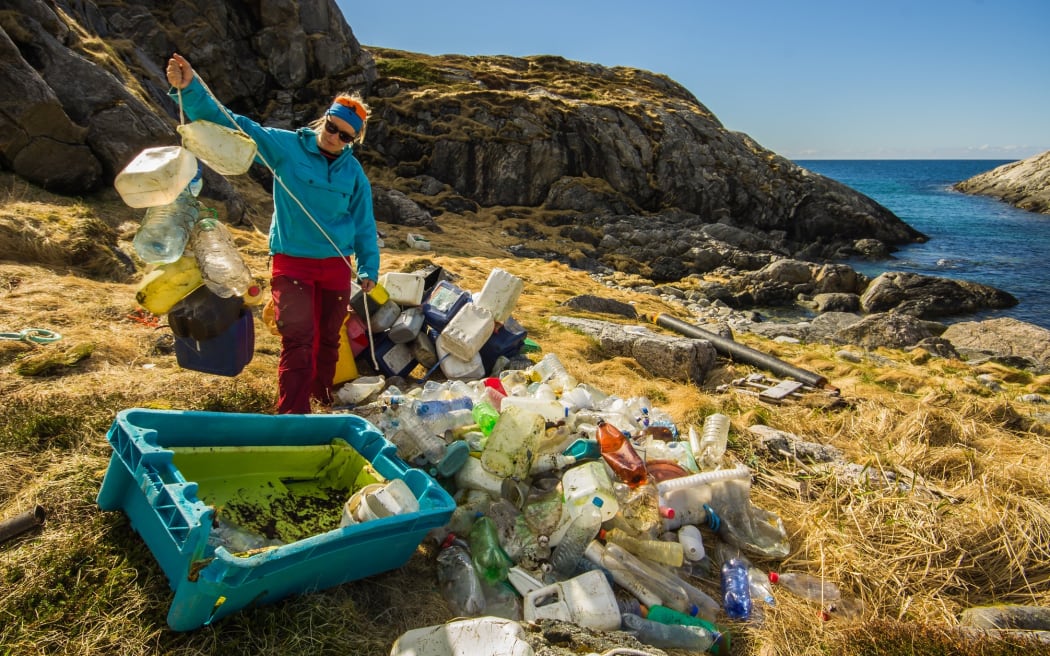
Marine litter: A surprisingly big proportion of the plastic bottles and cans found along the shoreline of the Norwegian Arctic are of foreign origin. Photo: Flickr / Bo Eide
Changing the choices consumers make
Kim Hill:
Julia, have you got any suggestions to the government to affect consumption patterns?
Juliet Gerrard:
The very last part of the report [being submitted to the government] at the end of the year is going to be led by the psychologists who are interested in how to change behaviour. They use examples like sunhats. 20 years ago, kids didn't wear sunhats at school. Now they all do.
How we get people to be more mindful of packaging is a much more complicated problem, but at least there are some tools out there to understand how you get that sort of cultural transformation. So people bring their water bottle with them, instead of buying a bottle of water.
Kim Hill:
What about the attitude that we have taken into tobacco: just tax the hell out of it?
Juliet Gerrard:
We do the science advice, not the tax advice. So what we'll do is –
Kim Hill:
But that's certainly in the arena of psychological incentive, surely.
Juliet Gerrard:
It is. So what will come out at the end of our report is a summary of the evidence, some steer on what might have worked overseas, and some suggestions. And then we give that to the Ministry for the Environment, and they get to design the policy tools to change behaviour.
Kim Hill:
If you want to engage society, then what would you do first which would be most effective?
Juliet Gerrard:
There are some really great community initiatives such as Sustainable Coastlines, which is a citizen science project where they've got people going out and actually collecting data. So how much plastic is there? What type is it? What could you recycle? What can't be recycled? What could you change to fix it? So they're popping up to really get people thinking about the data and how to collect it and how to change it. That's one way.
Kim Hill:
What would you do?
Xiaomeng Wu:
First, I think is public education. We believe in the three R's principle, reduce, reuse, recycle. I carry my water bottle with me everywhere I go, and never use plastic or any drinking straws because I think that's just ridiculous. As a consumer, you have to advocate for that choice. Push your manufacturer to say, “We will pay you a premium dollar or we will recognise your brand if you are going in that direction.”
Kim Hill:
What do you think about that idea?
Sharon Humphreys:
I think that we need to have balance in the conversation. I think when it comes to packaging, it's -
Kim Hill:
When you talk about balance – at what point are we told there will be more plastic in the ocean than fish?
Xiaomeng Wu:
2050.
Sharon Humphreys:
But that's not a given. That's a projection if we continue down the path that we already are doing. And I think it's clear that we're not continuing down that path. I think it's really obvious that there are massive commitments being made out there to really look at what we're doing and how we're doing it, and how we can change these things.
Kim Hill:
What massive commitments are you referring to?
Sharon Humphreys:
I think, if you look at the global commitments that have been made by the fast-moving consumer goods companies that actually manufacture at significant scale, the impact that they can make is actually substantial, because they are global companies. So I think it's fair to say that there is a great deal happening.
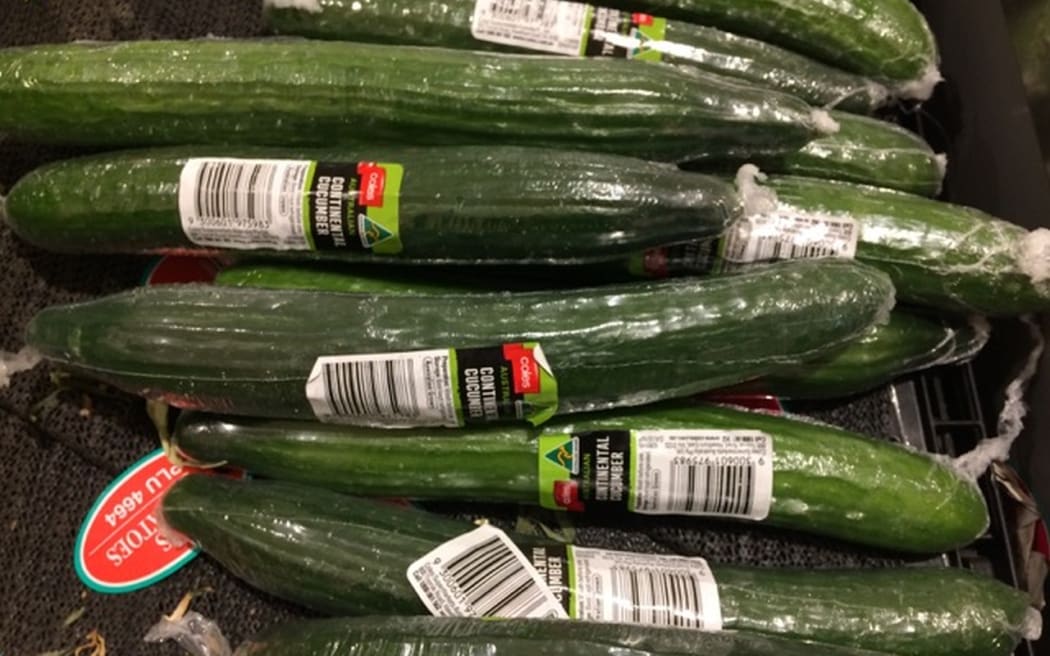
Photo: Flickr / Anna Gregory
The case of the gladwrapped cucumber
Sharon Humphreys:
When I talk about balance, it's about packaging as well. And we can't possibly talk about packaging and not talk about the humble cucumber.
Kim Hill:
Glad-wrapping it.
Sharon Humphreys:
That's right. If you are going to buy a cucumber that you're going to put in your salad tonight, you should not ever be looking at that in a piece of plastic. But if you're going to stick it in your chilly bin, and it's going to go in the back of the car, and it's going to the bach and you might use it sometime in the next week, maybe, then you want that cucumber to be wrapped. Because then you can still use it.
Kim Hill:
Or maybe those people just don't deserve cucumber. (LAUGHTER)
I wasn't being entirely facetious. If we are saying that in order to have a cucumber a week down the track at your bach, we need to wrap it in plastic, then just don't have the cucumber. If you want milk to last 5 or 10 days past its best-by date, and in order to have that milk, you need to have an opaque bottle that is more difficult to recycle than the clear plastic, then don't have milk that you need to drink 5 or 10 days after your due date.
Sharon Humphreys:
But that's a balanced conversation.
Kim Hill:
It's not a balanced conversation. That's saying anything that consumer wants, the consumer should have. And that's how we got into this mess. Do you know what I mean? There has to be something that people give up in order to save the planet. And I'm sorry, but they just can't have everything they want.
Mike Sammons:
They have given up plastic bags.
Kim Hill:
Oh, dear, how hard was that really?
Mike Sammons:
How hard was it? Exactly. So it's about consumer change, isn't it?
FURTHER READING
- Following the recycle bag
- Speaking up about end-of-life problematic products
- NZ's role in the Malaysian plastics dumping ground
- The plastic ties that bind
- Opinion piece about recycling
Recorded in Christchurch on 1 July 2019 in association with the New Zealand Food Safety Science & Research Centre

